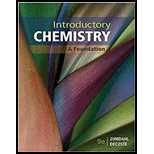
. For each of the following unbalanced oxidation-reduction chemical equations, balance the equation by inspection, and identify which species is the reducing agent.
a.
Want to see the full answer?
Check out a sample textbook solution
Chapter 18 Solutions
Introductory Chemistry: A Foundation
- The Toliens test for the presence of reducing sugars (say, in a urine sample) involves treating the sample with silver ions in aqueous ammonia. The result is the formation of a silver mirror within the reaction vessel if a reducing sugar is present. Using glucose, C6H12O6, to illustrate this test, the oxidation-reduction reaction occurring is C6H12O6 (aq) + 2 Ag+(aq) + 2OH(aq) C6H12O7(aq) + 2 Ag(s) + H2O() What has been oxidized, and what has been reduced? What is the oxidizing agent, and what is the reducing agent? Tolien's test. The reaction of silver ions with a sugar such as glucose produces metallic silver. (a) The set-up for the reaction. (b) The silvered test tubearrow_forwardOne of the few industrial-scale processes that produce organic compounds electrochemically is used by the Monsanto Company to produce1,4-dicyanobutane. The reduction reaction is 2CH2CHCH+2H++2eNC(CH2)4CN The NC(CH2)4CN is then chemically reduced using hydrogen gas to H2N(CH2)6NH2, which is used in the production of nylon. What current must be used to produce 150.kg NC(CH2)4CN per hour?arrow_forwardChromium has been investigated as a coating for steel cans. The thickness of the chromium film is determined by dissolving a sample of a can in acid and oxidizing the resulting Cr3+ to Cr2O72 with the peroxydisulfate ion: S2O82(aq) + Cr3+(aq) + H2O(l) Cr2O72(aq) + SO42(aq) + H+(aq) (Unbalanced) After removal of unreacted S2O82 an excess of ferrous ammonium sulfate [Fe(NH4)2(SO4)26H2O] is added, reacting with Cr2O72 produced from the first reaction. The unreacted Fe2+ from the excess ferrous ammonium sulfate is titrated with a separate K2Cr2O7 solution. The reaction is: H+(aq) + Fe2+(aq) + Cr2O72(aq) Fe3+(aq) + Cr3+(aq) + H2O(l) (Unbalanced) a. Write balanced chemical equations for the two reactions. b. In one analysis, a 40.0-cm2 sample of a chromium-plated can was treated according to this procedure. After dissolution and removal of excess S2O82, 3.000 g of Fe(NH4)2(SO4)26H2O was added. It took 8.58 mL of 0.0520 M K2Cr2O7 solution to completely react with the excess Fe2+. Calculate the thickness of the chromium film on the can. (The density of chromium is 7.19 g/cm3)arrow_forward
- Balance each of the following equations, and classify them as precipitation, acid-base, gas-forming, or oxidation-reduction reactions. Show states for reactants and products (s, , g, aq). (a) CuCl2 + H2S CuS + HCl (b) H3PO4 + KOH H2O + K3PO4 (c) Ca +HBr H2 + CaBr2 (d) MgC12 + NaOH Mg(OH)2 + NaClarrow_forwardBromine is obtained from sea water by the following redox reaction: Cl2(g) + 2 NaBr(aq) 2 NaCl(aq) + Br2() (a) What has been oxidized? What has been reduced? (b) Identify the oxidizing and reducing agents.arrow_forwardWhich two of the following reactions are oxidation-reduction reactions? Explain your answer briefly. Classify the remaining reaction. (a) CdC12(aq) + Na2S(aq) CdS(s) + 2 NaCl(aq) (b) 2 Ca(s) + O2(g) 2 CaO(s) (c) 4 Fe(OH)2(s) + 2 H2O() + O2(g) 4 Fe(OH)3(s)arrow_forward
- Triiodide ions are generated in solution by the following (unbalanced) reaction in acidic solution: IO3(aq) + I(aq) I3(aq) Triiodide ion concentration is determined by titration with a sodium thiosulfate (Na2S2O3) solution. The products are iodide ion and tetrathionate ion (S4O6). a. Balance the equation for the reaction of IO3 with I ions. b. A sample of 0.6013 g of potassium iodate was dissolved in water. Hydrochloric acid and solid potassium iodide were then added. What is the minimum mass of solid KI and the minimum volume of 3.00 M HQ required to convert all of the IO3 ions to I ions? c. Write and balance the equation for the reaction of S2O32 with I3 in acidic solution. d. A 25.00-mL sample of a 0.0100 M solution of KIO. is reacted with an excess of KI. It requires 32.04 mL of Na2S2O3 solution to titrate the I3 ions present. What is the molarity of the Na2S2O3 solution? e. How would you prepare 500.0 mL of the KIO3 solution in part d using solid KIO3?arrow_forwardThe iron content of hemoglobin is determined by destroying the hemoglobin molecule and producing small water-soluble ions and molecules. The iron in the aqueous solution is reduced to iron(II) ion and then titrated against potassium permanganate. In the titration, iron(ll) is oxidized to iron(III) and permanganate is reduced to manganese(II) ion. A 5.00-g sample of hemoglobin requires 32.3 mL of a 0.002100 M solution of potassium permanganate. The reaction with permanganate ion is MnO4(aq)+8H+(aq)+5Fe2+(aq)Mn2+(aq)+5Fe3+(aq)+4H2O What is the mass percent of iron in hemoglobin?arrow_forwardComplete and balance the equations below, and classify them as precipitation, acid-base, gas-forming, or oxidation-reduction reactions. Show states for reactants and products (s, , g, aq). (a) NiCO3 + H2SO4 . (b) Co(OH)2 + HBr (c) AgCH3CO2 + NaCI (d) NiO + CO .arrow_forward
- The Ostwald process for the commercial production of nitric acid involves the Following three steps: 4NH3(g)+5O2(g)4NO(g)+6H2O(s)2NO(g)+O2(g)2NO2(g)3NO2(g)+H2O(l)2HNO3(aq)+NO(g) a. Which reaction in the Ostwald process are oxidation-reduction reactions? b. Identify each oxidizing agent and reducing agent.arrow_forwardThe blood alcohol (C2H5OH) level can be determined by titrating a sample of blood plasma with an acidic potassium di-chromate solution, resulting in the production of Cr3+ (aq) and carbon dioxide. The reaction can be monitored because the dichromate ion (Cr2O72) is orange in solution, and the Cr3+ ion is green. The balanced equations is 16H+(aq) + 2Cr2O72(aq) + C2H5OH(aq) 4Cr4+(aq) + 2CO2(g) + 11H2O(l) This reaction is an oxidationreduction reaction. What species is reduced, and what species is oxidized? How many electrons are transferred in the balanced equation above?arrow_forwardSodium thiosulfate, Na2S2O3, is used as a fixer in black-and-white photography. Suppose you have a bottle of sodium thiosulfate and want to determine its purity. The thiosulfate ion can be oxidized with I2 according to the balanced, net ionic equation I2(aq) + 2 S2O32(aq) 2 I(aq) + S4O62 (aq) If you use 40.21 mL of 0.246 M I2 in a titration, what is the weight percent of Na2S2O3 in a 3.232-g sample of impure material?arrow_forward
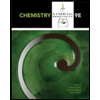 Chemistry & Chemical ReactivityChemistryISBN:9781133949640Author:John C. Kotz, Paul M. Treichel, John Townsend, David TreichelPublisher:Cengage Learning
Chemistry & Chemical ReactivityChemistryISBN:9781133949640Author:John C. Kotz, Paul M. Treichel, John Townsend, David TreichelPublisher:Cengage Learning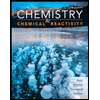 Chemistry & Chemical ReactivityChemistryISBN:9781337399074Author:John C. Kotz, Paul M. Treichel, John Townsend, David TreichelPublisher:Cengage Learning
Chemistry & Chemical ReactivityChemistryISBN:9781337399074Author:John C. Kotz, Paul M. Treichel, John Townsend, David TreichelPublisher:Cengage Learning Chemistry: The Molecular ScienceChemistryISBN:9781285199047Author:John W. Moore, Conrad L. StanitskiPublisher:Cengage Learning
Chemistry: The Molecular ScienceChemistryISBN:9781285199047Author:John W. Moore, Conrad L. StanitskiPublisher:Cengage Learning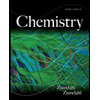
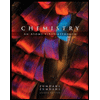 Chemistry: An Atoms First ApproachChemistryISBN:9781305079243Author:Steven S. Zumdahl, Susan A. ZumdahlPublisher:Cengage Learning
Chemistry: An Atoms First ApproachChemistryISBN:9781305079243Author:Steven S. Zumdahl, Susan A. ZumdahlPublisher:Cengage Learning ChemistryChemistryISBN:9781305957404Author:Steven S. Zumdahl, Susan A. Zumdahl, Donald J. DeCostePublisher:Cengage Learning
ChemistryChemistryISBN:9781305957404Author:Steven S. Zumdahl, Susan A. Zumdahl, Donald J. DeCostePublisher:Cengage Learning





